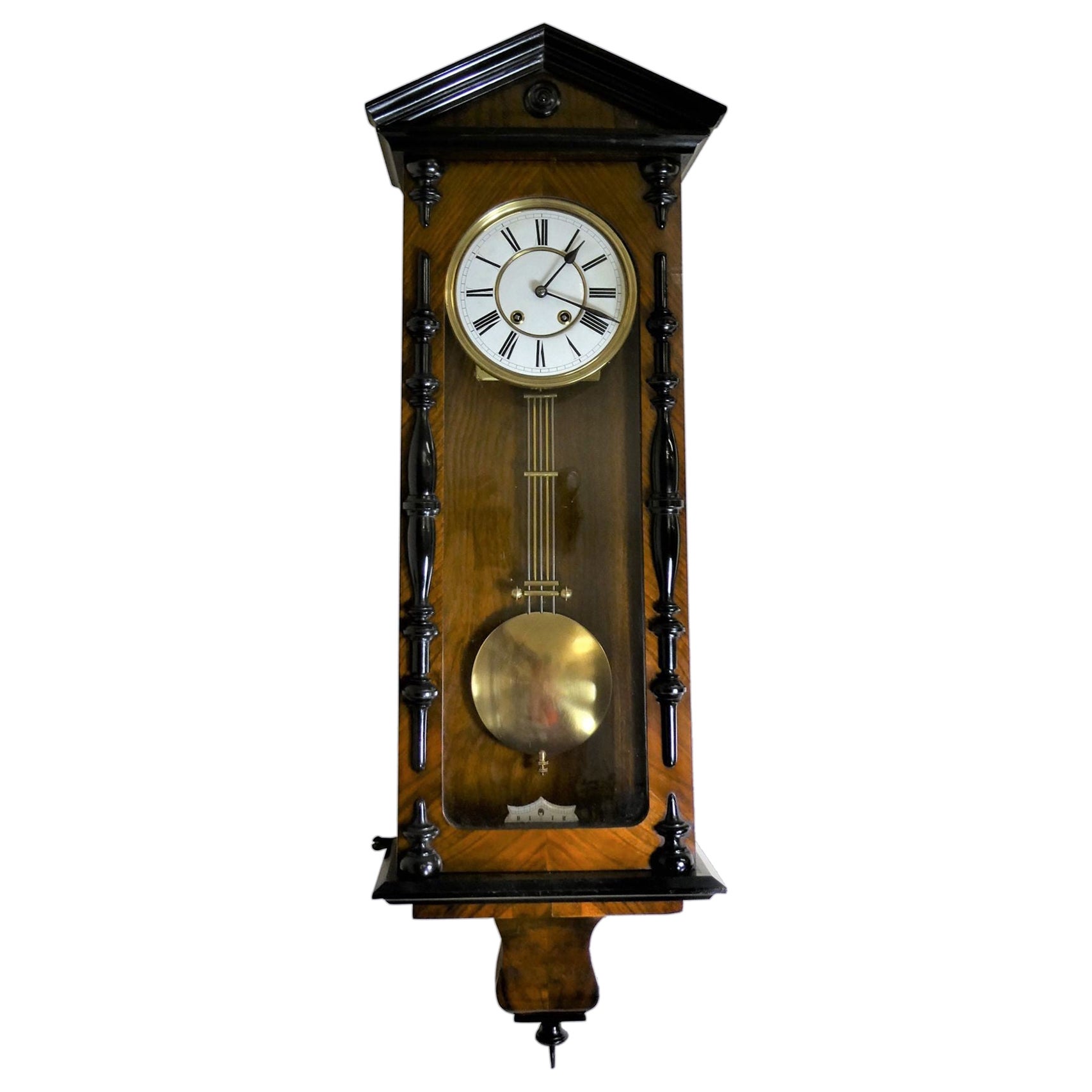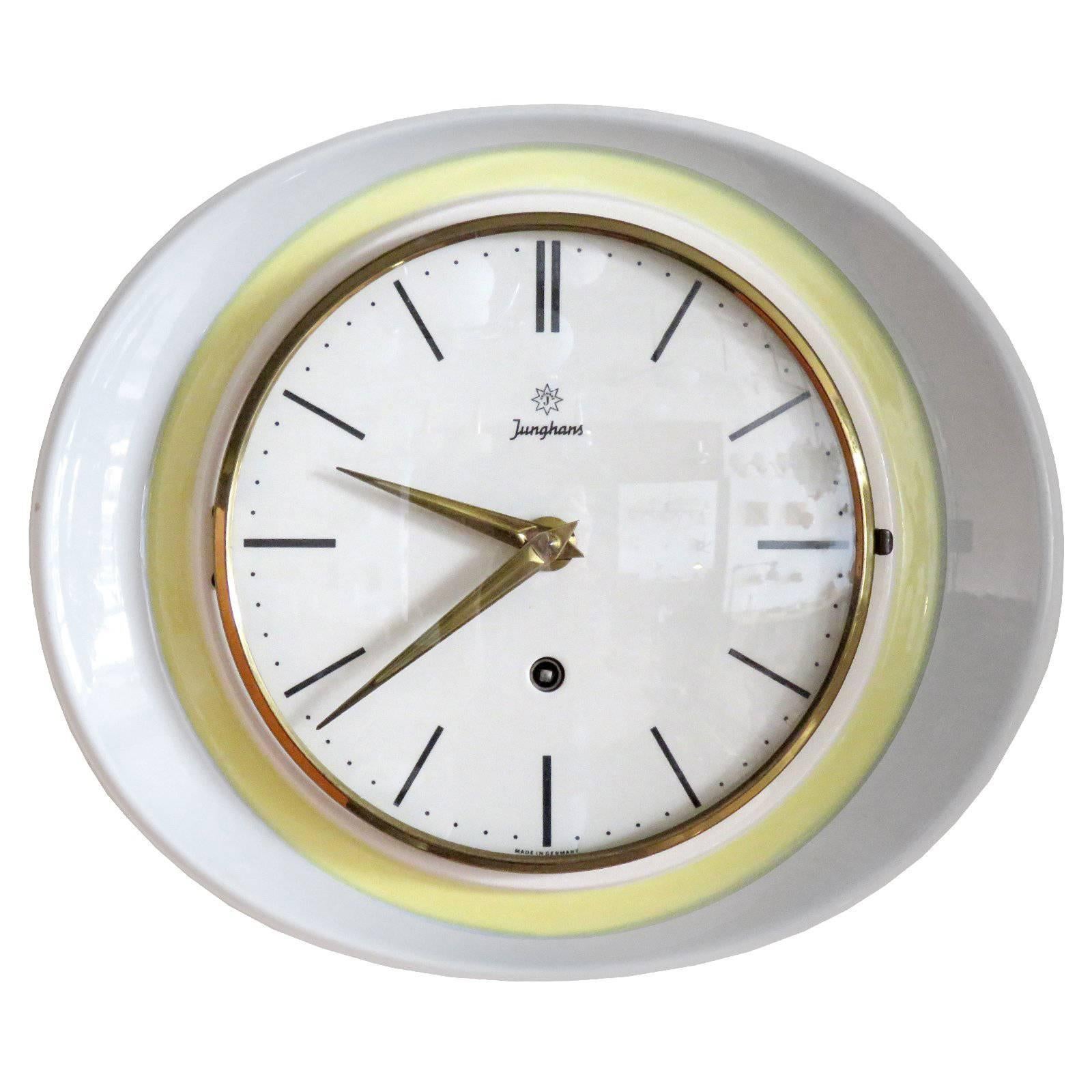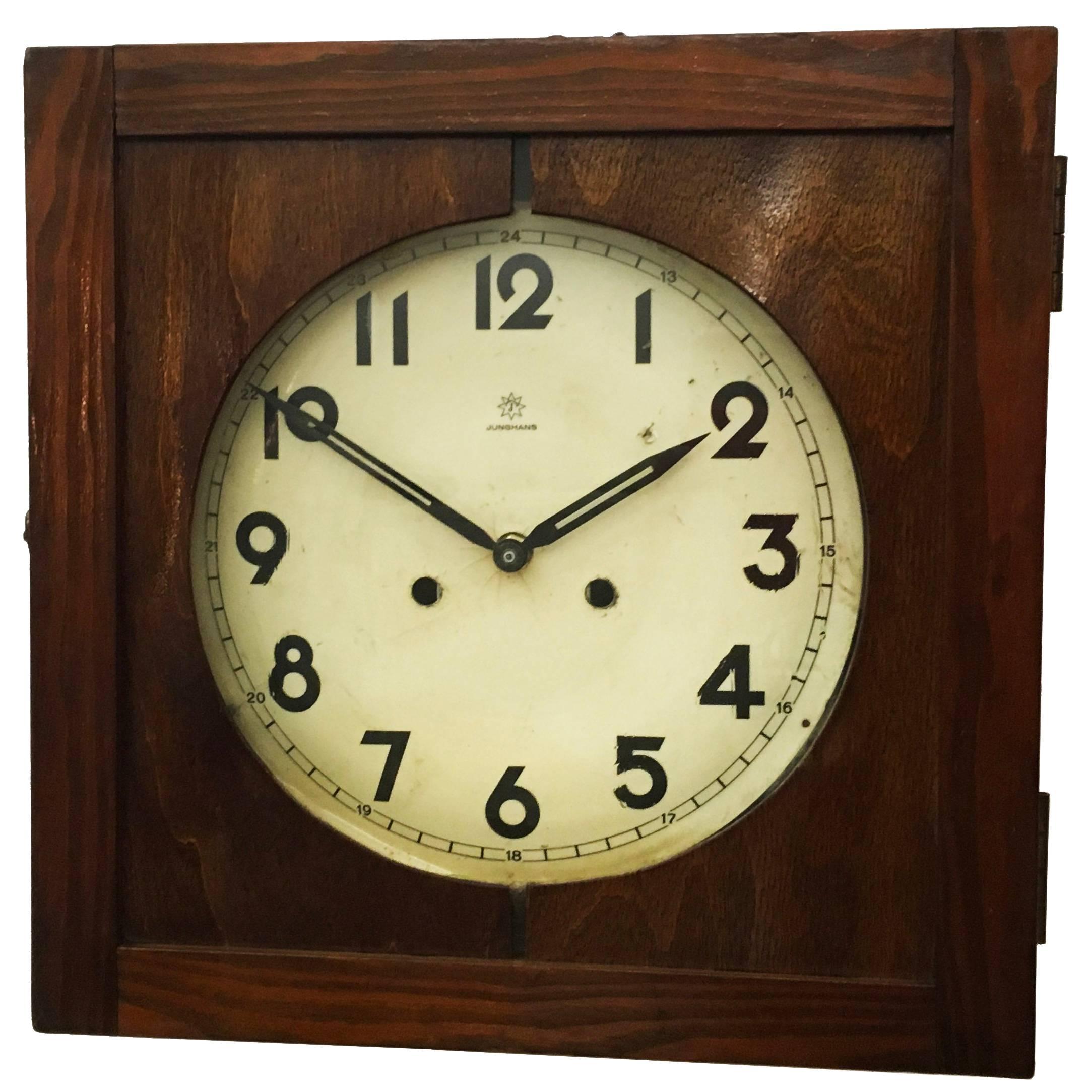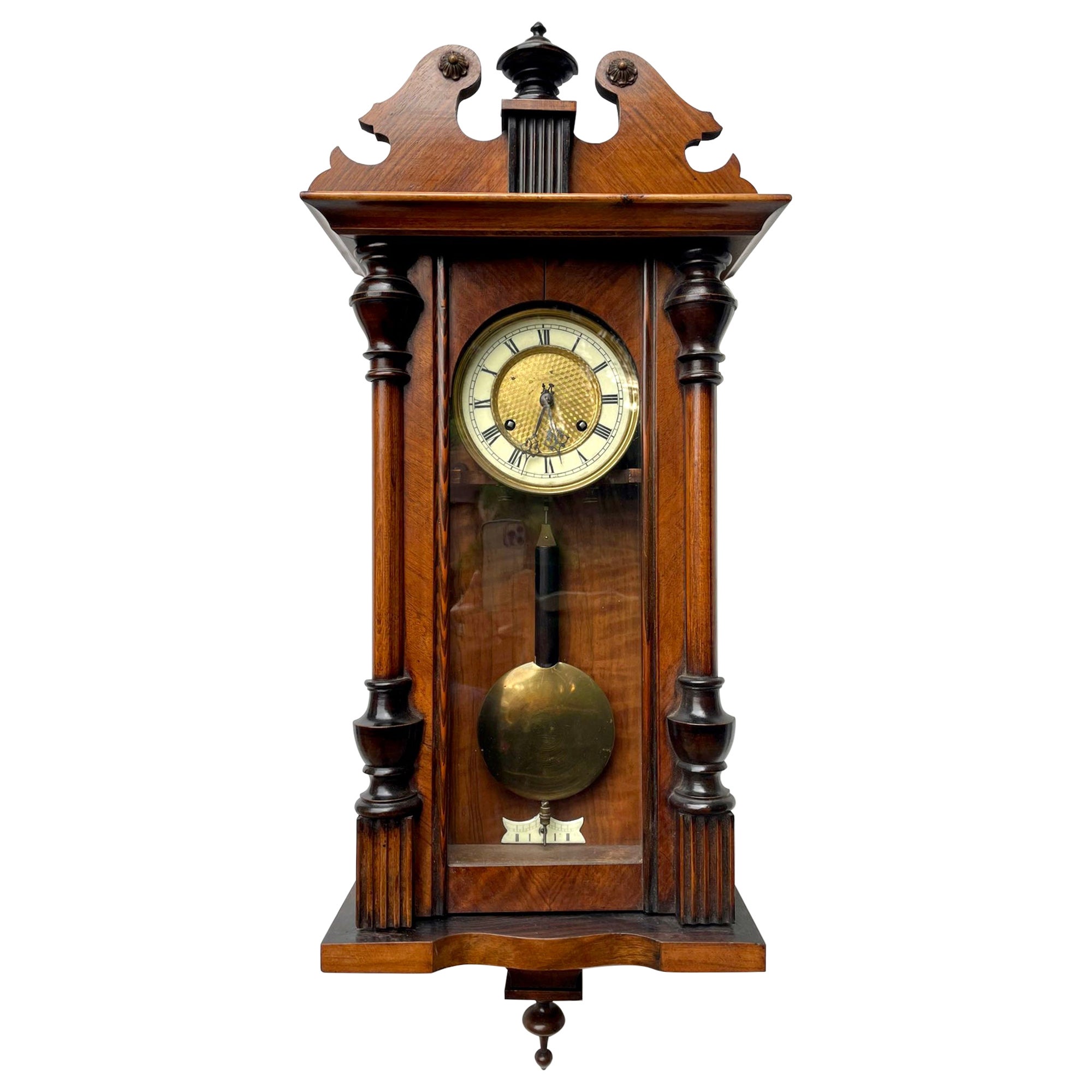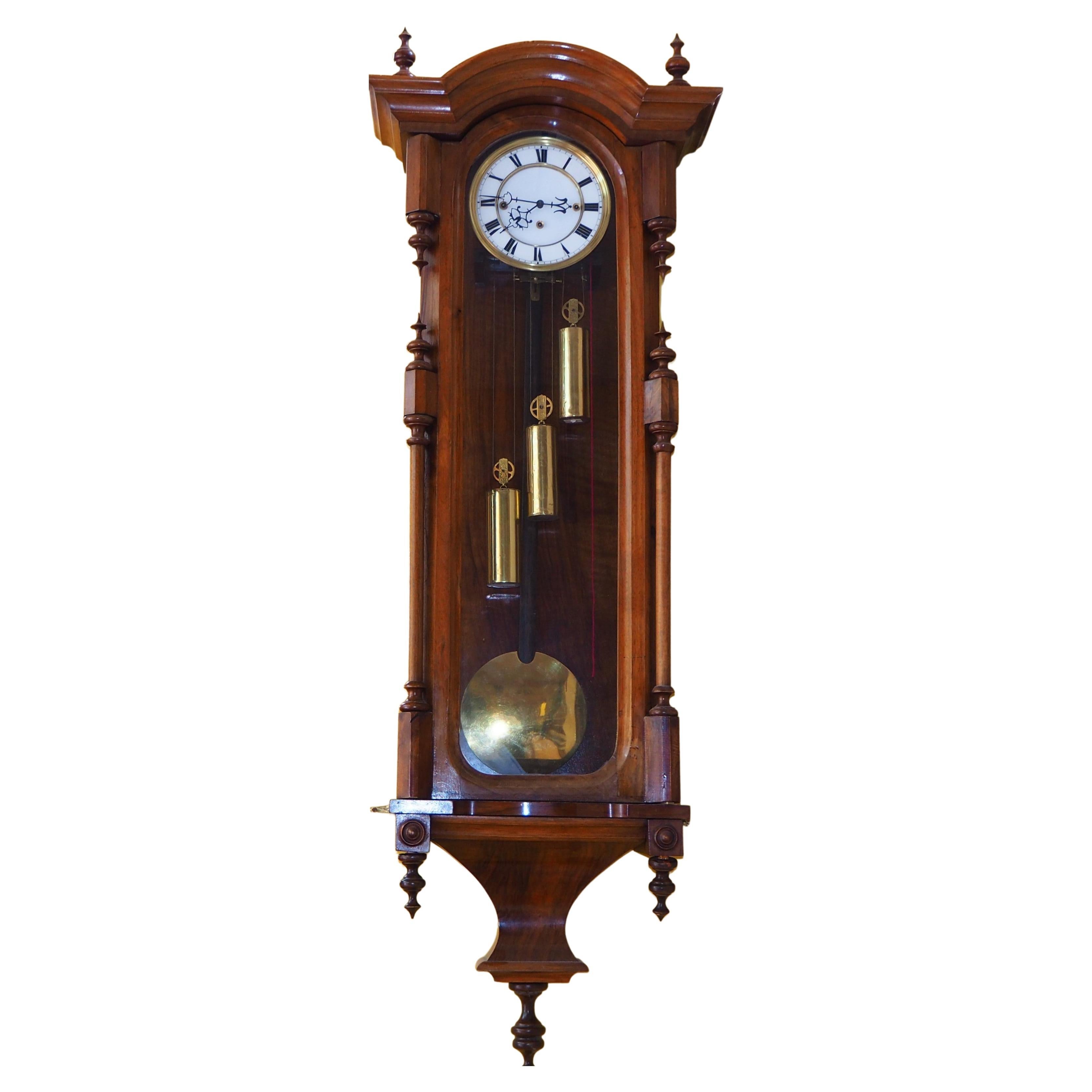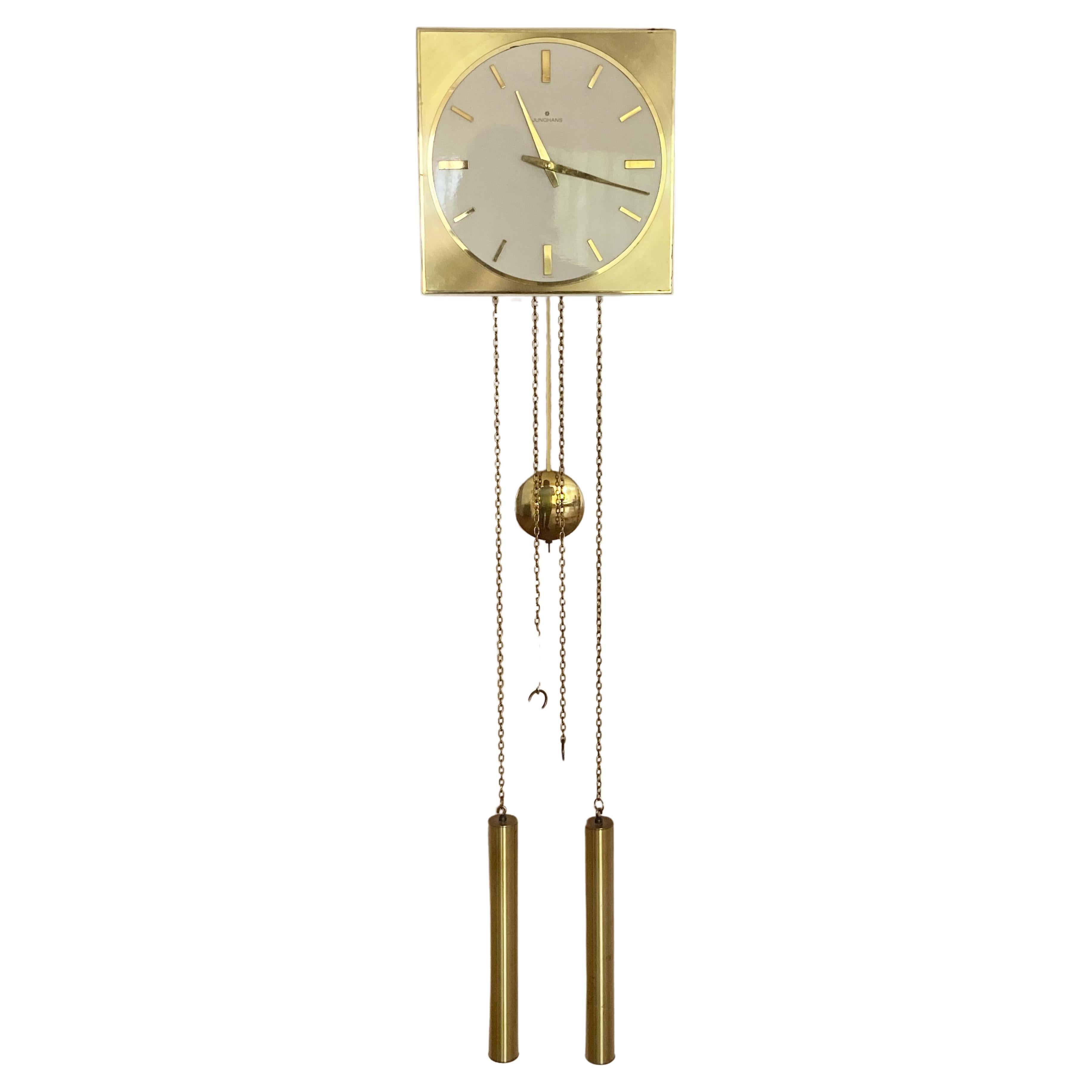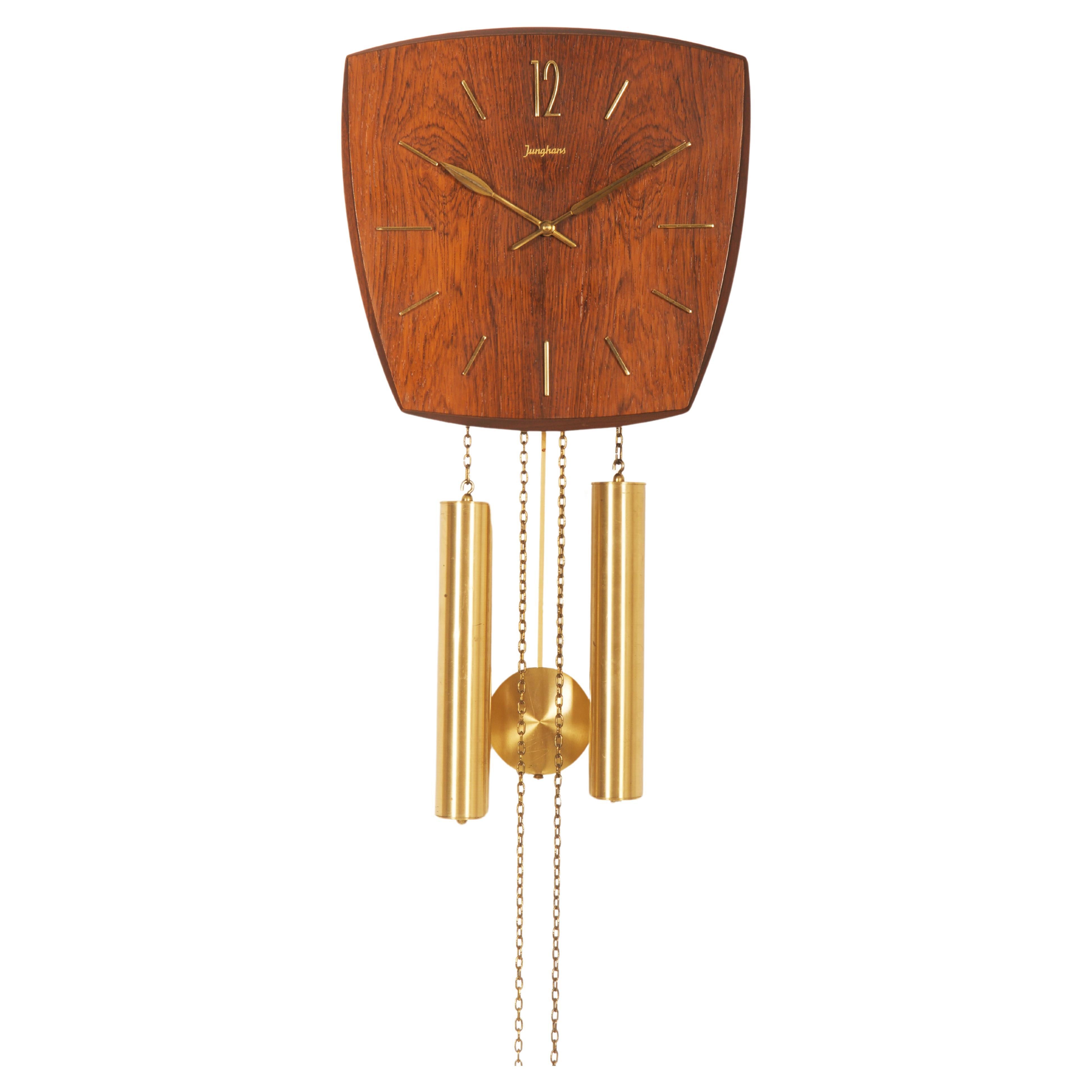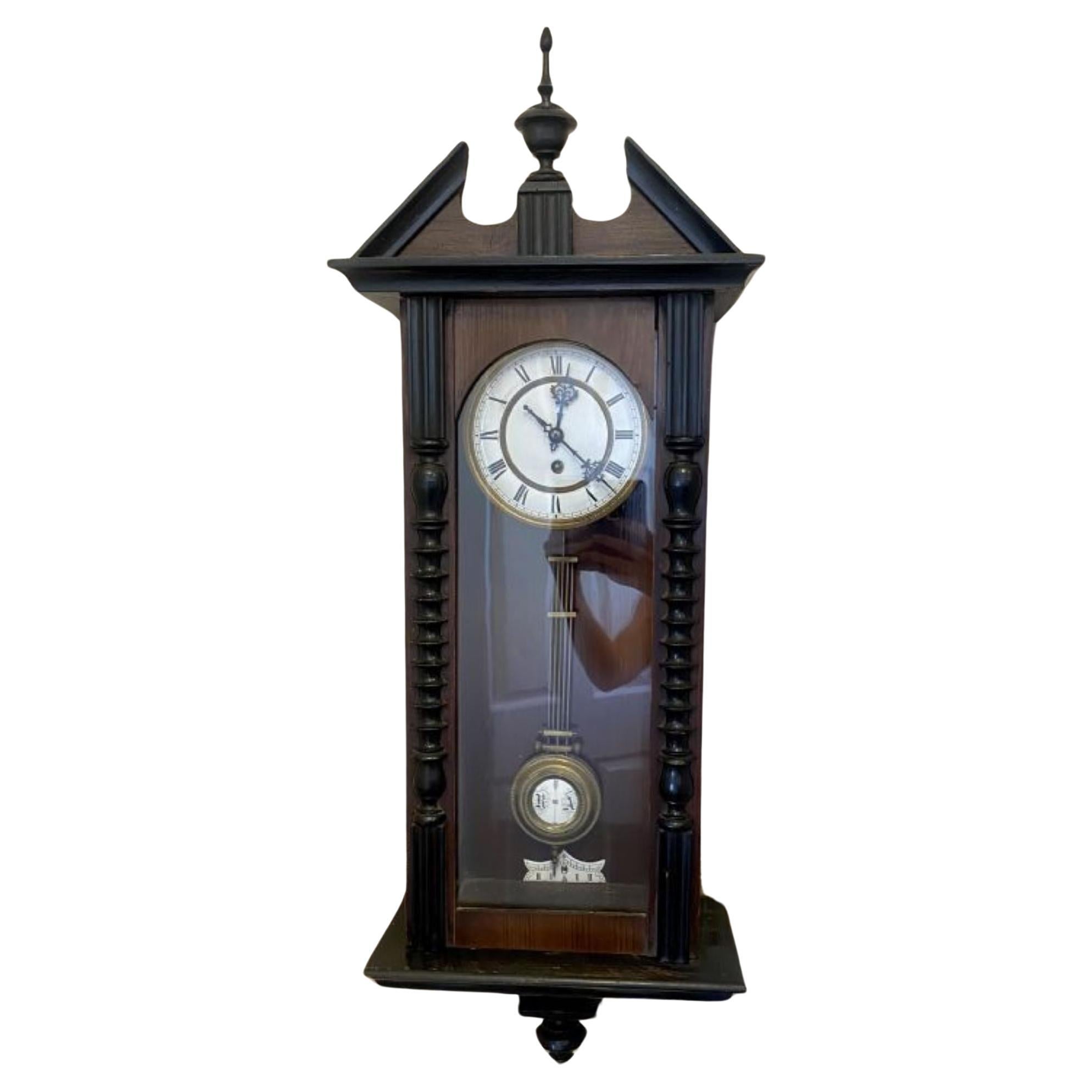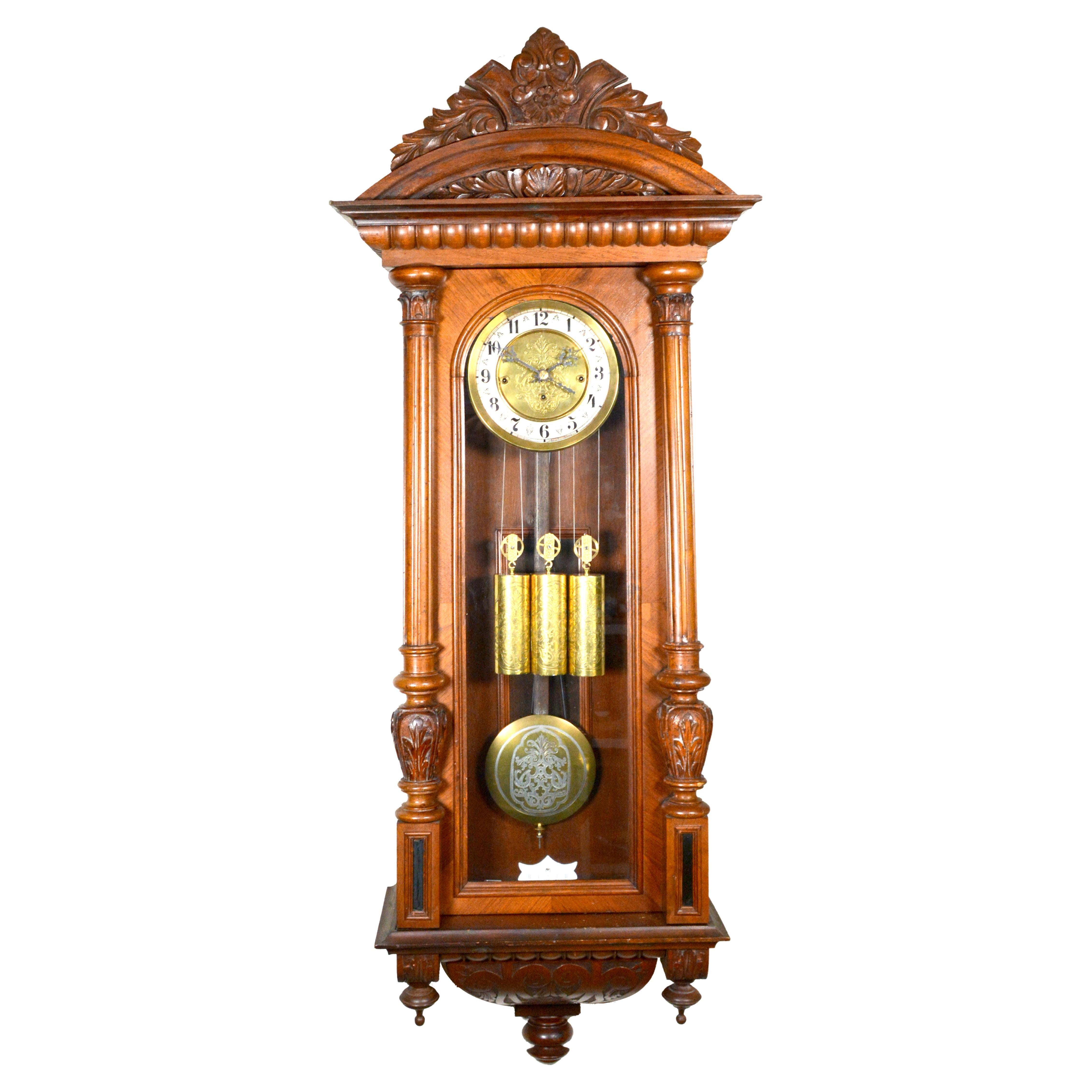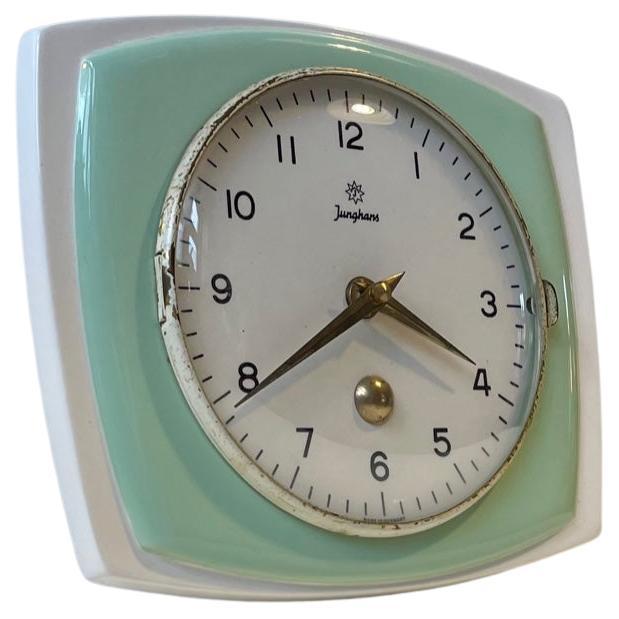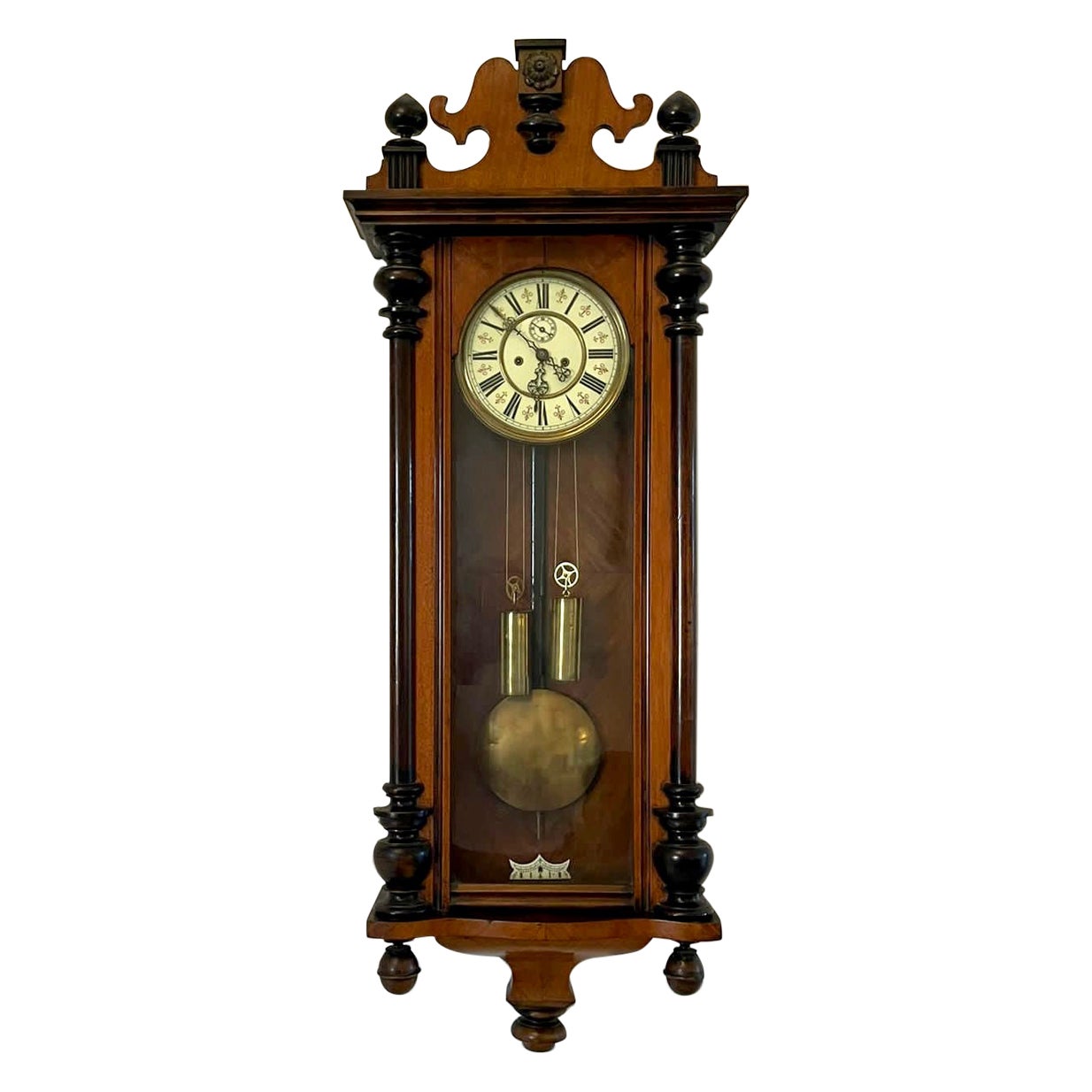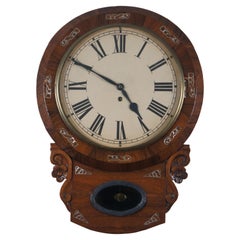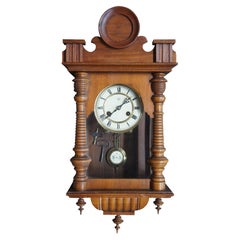
Antique German Victorian Junghans Vienna Regulator Walnut Wall Clock
View Similar Items
Want more images or videos?
Request additional images or videos from the seller
1 of 13
Antique German Victorian Junghans Vienna Regulator Walnut Wall Clock
About the Item
- Creator:Junghans Uhren GmbH (Manufacturer)
- Dimensions:Height: 25.75 in (65.41 cm)Width: 12.25 in (31.12 cm)Depth: 6.75 in (17.15 cm)
- Style:Victorian (Of the Period)
- Materials and Techniques:
- Period:
- Date of Manufacture:Late 19th Century
- Condition:Wear consistent with age and use. Good antique condition, wear and distressing commensurate with age and use, missing upper finials, working.
- Seller Location:Dayton, OH
- Reference Number:Seller: 351861stDibs: LU5343230813002
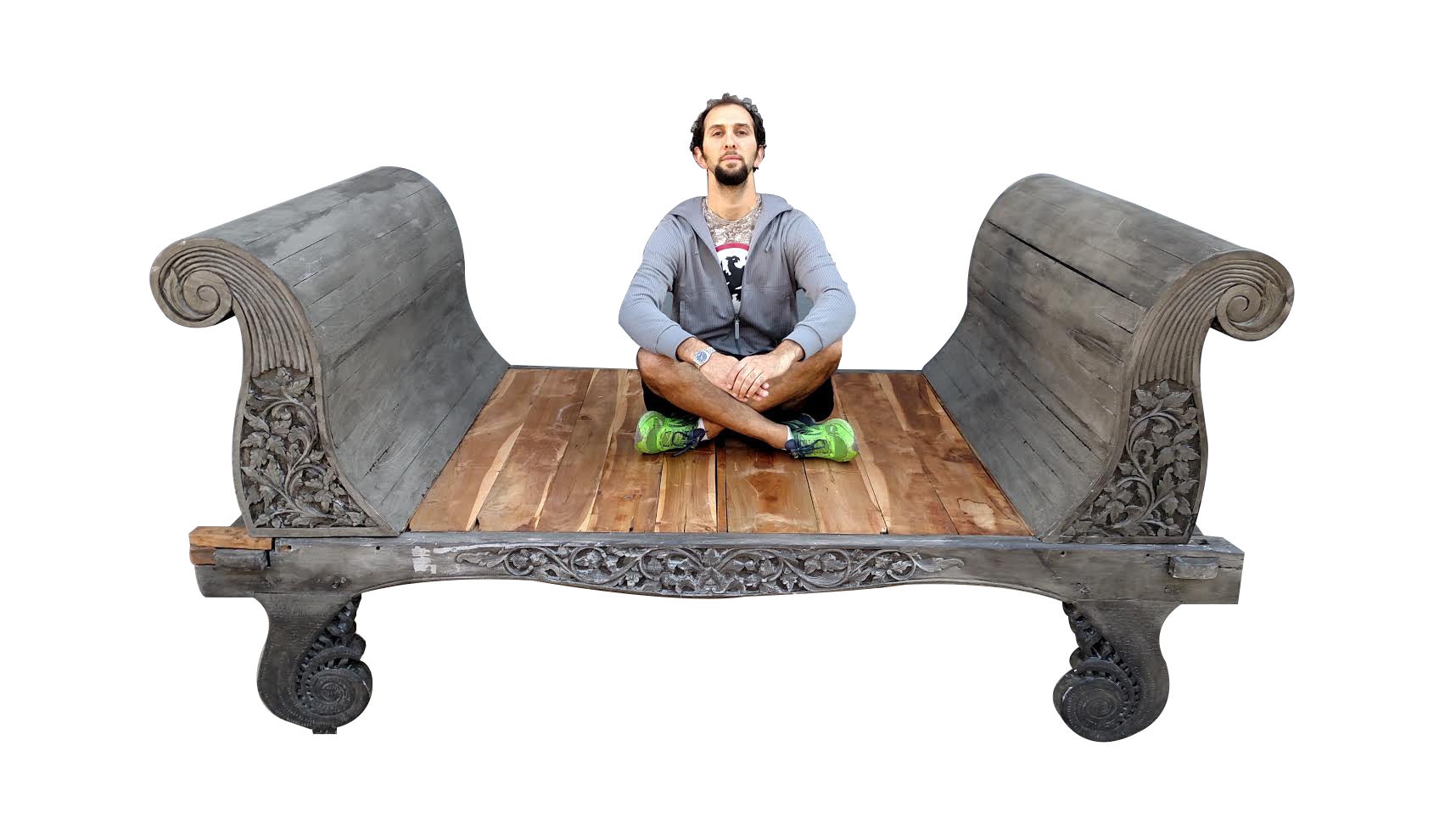
About the Seller
4.9
Platinum Seller
These expertly vetted sellers are 1stDibs' most experienced sellers and are rated highest by our customers.
Established in 2010
1stDibs seller since 2020
1,115 sales on 1stDibs
More From This SellerView All
- Antique German Victorian Mahogany Westminster Kienzle Bracket Mantel ClockBy Kienzle ClocksLocated in Dayton, OHEarly 20th Century Kienzle key wound mantel clock with simple neoclassical mahogany case and floral etched brass face including controls for speed and chime above the clockface. Arab...Category
Early 20th Century Neoclassical Mantel Clocks
MaterialsMahogany
- Antique German Walnut Inlaid Mother of Pearl Short Drop Peekaboo Wall Clock 23"Located in Dayton, OHAntique short drop wall clock featuring a round beveled frame accented with inlaid mother of pearl cut-out leaf designs. The drop features an oval peekaboo window framed in black met...Category
Early 20th Century Wall Clocks
MaterialsMother-of-Pearl, Glass, Walnut
- Vintage German Brass Ships Porthole Nautical Boat Wall Clock Mechanical MovementLocated in Dayton, OHMid 20th century key wound port hole clock. Features a brass frame with metal dial and glass window. Hangs via 3 screw holes at the base. Marked along the face EW A porthole, som...Category
Mid-20th Century Mid-Century Modern Wall Clocks
MaterialsBrass
- Monumental Antique German Black Forest Eagle Chamois Mantel Hunt ClockLocated in Dayton, OH"Monumental 19th century antique German Black Forest mantel clock featuring carved high relief details with a winged bald eagle mounted ato...Category
Antique Mid-19th Century Black Forest Mantel Clocks
MaterialsHardwood
- Rare Self Winding Clock Co Naval Observatory Time Western Union Wall Clock 26"By Self Winding Clock Co.Located in Dayton, OHAntique Western Union, Naval Observatory Time, self winding clock. Features a tall wooden case with carved corners and pediment mounted with tin sign reading "Naval Observatory Time Hourly By Western Union. White metal face with black Roman numerals and hands. Interior of case labeled "Property of Self-Winging Clock Co New York" and serial number on metal tag as well as on works. F Style / Vibrator movement, Serial Number 92630 (likely manufactured before 1917). Patented Oct. 4, 1898 by the Self Winding Clock Company. Fitted with Archer AC Adapter. "The Self Winding Clock Company (SWCC) of New York began business in 1886 marketing their own electro-mechanical clocks based on the 1884 electro-mechanical clock patent of one of the company founders, Chester Pond (1844-1912). The innovative principle of this clock mechanism was the incorporation of a small electric winding motor that automatically rewound the mainspring after the clock ran for one hour. The clocks were powered by batteries. The batteries would last at least one year. By being automatically rewound each hour, the strain on the mechanism was kept to a minimum, resulting in a very accurate timepiece. At about the same time SWCC began selling clocks, Pond was developing an electro-mechanical synchronizer attached to the clock movement that could synchronize the clock hands to an accurate time source. The synchronization occurs when a remote, precisely timed, electrical impulse is sent via wires connected to the individual clocks. By 1887 the synchronizers had been so improved that the Self Winding Clock Company could not only market individual clocks but also sell entire synchronized clock systems. By the 1960’s the days of individual elegant mechanical timepieces and synchronized time systems were over. SWCC ceased operations in the late 1960’s. All company records and inventories were relegated to the trash pile. The STYLE “F”, or as commonly referred to, the VIBRATOR movement was developed by Frederick M. Schmidt in the late 1890’s. By 1898 the “F” movement was being installed in almost all SWCC clocks. The movement has a Graham dead beat escapement. The “F” movement incorporates both the time train and winding motor in one set of plates. The motor used a single pair of coils. It was more reliable and easier to service than the rotary movement. The mainspring is re-wound after running for one hour. The vibrating armature oscillates up and down carrying a winding lever with a pawl that turns the winding wheel. The “F” movement was used in individual clocks and in clocks that were part of synchronized systems. It was made in 60, 80,120 and 140 beat versions. There were virtually no changes to the movement in 60 plus years the movement was in production. Almost all Style “F” movements wound on 3 volts DC. Style “F” movement serial numbers started in the 33,000’s and the first movements were probably made in 1898. The earliest plates had patent dates of 1891, 1892 & 1898. Serial numbers with these patent dates go up to the 63,000’s and were made before 1908. By 1908 the plates only had the 1898 patent date. By using catalog images of movement serial numbers it can be concluded that movements with serial numbers up to 112,000 were made in or before 1917. Movements with serial numbers up to 196,000’s were made in or before 1929. The single patent date serial numbers go as high as 220,000’s. Then there appears to be a large numbering gap. Finally, movements appear with no patent dates and serial numbers with the prefix FR. These numbers start at 300,000 but only continue to about 302,000. Start again at 400,000 and continue to about 402,000. Based on the large serial number gaps, the total number of “F” movements manufactured is probably around 200,000. They were manufactured between 1898 and possibly as late as the 1950’s. SWCC both sold clocks to and partnered with their biggest customer, Western Union in a nationwide distribution of precisely accurate “Naval Observatory Time” clocks. These either 120 or 140 beat Naval Observatory clocks...Category
Early 20th Century Late Victorian Wall Clocks
MaterialsMetal
- Vintage Victoria Station 1747 Double Sided Brass Wall Mount Railway Clock 18"Located in Dayton, OHLate 20th century double sided railway clock styled after the famous clock at Victoria Station, London. Wrought metal wall mounted support and case in a dark bronze finish. 12 inch d...Category
Late 20th Century Victorian Wall Clocks
MaterialsMetal
You May Also Like
- Victorian Walnut and Ebony Vienna 'Regulator' Wall ClockLocated in Norwich, GBVictorian Walnut and Ebony Vienna ‘Regulator’ Wall Clock Victorian Vienna ‘Regulator’ wall clock housed in a walnut case with ebony mould...Category
Antique 1890s Victorian Wall Clocks
MaterialsWalnut
- Junghans Germany Wall Clock, 1950By Junghans Uhren GmbH, Max BillLocated in Los Angeles, CARare, oval ceramic wall clock, attributed to Max Bill for Junghans Germany in the 1950s, with a Dual tone ceramic housing, powered by mechanical manual-winding clockwork, 3sec/24h, k...Category
Vintage 1950s German Mid-Century Modern Wall Clocks
MaterialsBrass
- Junghans Wall ClockBy Junghans Uhren GmbHLocated in Vienna, ATWood box, clock face with Arabic numbers, restored new battery movement.Category
Vintage 1930s German Art Deco Wall Clocks
MaterialsWood
- Antique Victorian Walnut Vienna Wall ClockLocated in Suffolk, GBAntique Victorian walnut Vienna wall clock having a shaped swan neck top and a superb quality walnut case with turned column...Category
Antique 19th Century German Victorian Wall Clocks
MaterialsWalnut
- Vienna Regulator, Grand Sonnerie Wall Clock in WalnutBy Vienna BronzeLocated in Perth, GBIn the noted horology book "Britten's Old Clocks and Watches", G.H. Baillie defines a Grand Sonnerie movement as follows: "A form of quarter-striking in which the hour last struck is also repeated at each hour." It works like this, striking the quarter-hour on one gong and the hour on a second, slightly lower-toned gong: At 3:15 the clock strikes once on the higher chime to indicate the quarter hour, followed by three strikes on the lower chime to indicate the hour. At 3:30 the clock strikes two times on the higher chime (half-hour), followed by three chimes on the lower gong (hour). This way, if you are within hearing distance of the clock, day or night, you can tell exactly what time it is at each quarter hour A "petite sonnerie...Category
Antique Late 19th Century Austrian Late Victorian Furniture
MaterialsWalnut
$9,713 Sale Price20% Off - German 1960s Junghans Pendulum + Weights + Gong Wall ClockBy Junghans Uhren GmbHLocated in Krefeld, DEWall clock Design & produced by Junghans in 1960s. Brass metal and Teak wood. Mechanical movement and gong is in good working condition. Very nice gong but if you don't like it is po...Category
Vintage 1960s German Mid-Century Modern Grandfather Clocks and Longcase ...
MaterialsBrass
Recently Viewed
View AllMore Ways To Browse
Victorian Antique Wall Clocks Victorian Wall Clocks
Antique Victorian Wall Clocks
Antique Victorian Wall Clock
Victorian Wall Clock Antique Clocks
Antique Walnut Wall Clock
Wall Regulator
Regulator Wall Clock
Regulator Wall Clocks
Vienna Wall Clocks
Victorian 19th Century Wall Clock
Antique Regulator Wall Clocks
Antique Regulator Wall Clock Wall
Antique Wall Clock Regulator
Antique Wall Antique Regulator Clock
Antique Wall Regulator Clock
Antique Wall Regulator Clocks
Regulator Wall Clocks Antique
Regulator Wall Clock Antique
